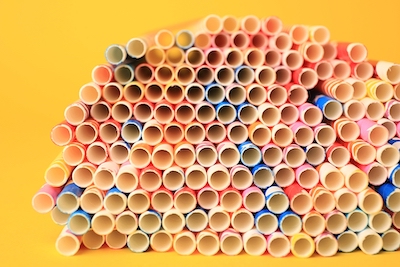In recent years, the debate over whether to use paper or plastic shopping bags has become increasingly important. As we strive to protect our planet, understanding the impact of these bags on the environment is crucial. This article will explore the production, use, and disposal of paper and plastic bags, aiming to provide a comprehensive overview that helps us make informed choices about which bags to use.
Production
Paper Bags
Paper bags are made from wood pulp, which comes from trees. The process involves cutting down trees, which are then transported to a mill where they’re turned into pulp. This pulp is then pressed, dried, and rolled into paper that can be made into bags. While paper bags are biodegradable and can be more easily recycled than plastic, their production requires a significant amount of water, energy, and chemicals. Moreover, the need to cut down trees can lead to deforestation and habitat loss.
Plastic Bags
Plastic bags are made from fossil fuels, primarily oil and natural gas. The process involves extracting these resources, refining them into polymers, and then molding these polymers into bags. Plastic bag production uses less energy and water than paper bag production and results in fewer carbon emissions. However, because plastic bags are made from non-renewable resources, their production contributes to resource depletion and environmental pollution.
Environmental Impact
Usage
Both paper and plastic bags have advantages and disadvantages in terms of environmental impact. Paper bags, being biodegradable, do not persist in the environment as long as plastic bags. However, if not properly disposed of, they can still contribute to litter and pollution. Plastic bags, while not biodegradable, are often reused more frequently than paper bags, which can mitigate some of their environmental impacts.
Disposal and Recycling
The disposal of paper and plastic bags significantly affects their environmental impact. Paper bags can be recycled more easily than plastic bags and can decompose in landfills. However, the recycling process for paper bags still requires a substantial amount of energy and water. Plastic bags, on the other hand, are much harder to recycle due to the complexity of their polymers, and they can take hundreds of years to degrade in landfills. When not properly disposed of, plastic bags can end up in oceans and waterways, harming marine life.
Sustainability
Paper Bags
Paper bags can be considered more sustainable if they are made from recycled materials and if the wood used in their production is sourced from sustainably managed forests. The use of recycled materials reduces the need for virgin resources and the environmental impact of production.
Plastic Bags
Some plastic bags are made from recycled materials, which can reduce their environmental impact. Additionally, innovations in biodegradable and compostable plastics are beginning to offer more sustainable options for plastic bags. However, the sustainability of these alternatives depends on the availability of composting facilities and the actual degradation rate of the bags in natural environments.
Conclusion
The choice between paper and plastic shopping bags is not straightforward. Both have significant environmental impacts that need to be considered. Reducing the use of both types of bags and opting for reusable bags made from sustainable materials is the best option for minimizing environmental harm. Education and awareness about the proper disposal and recycling of paper and plastic bags can also help mitigate their negative effects.
As consumers, it’s important to make informed choices and consider the life cycle of the bags we use. By opting for reusable bags and supporting sustainable practices, we can contribute to a healthier planet.














